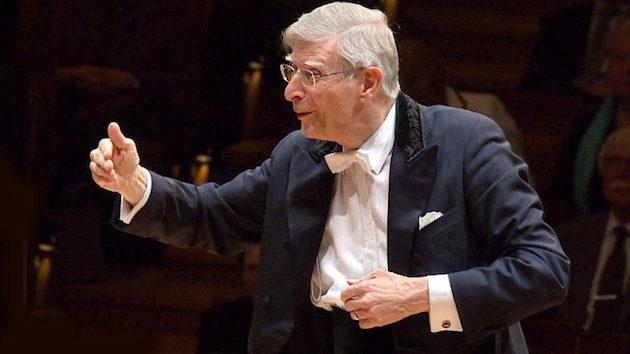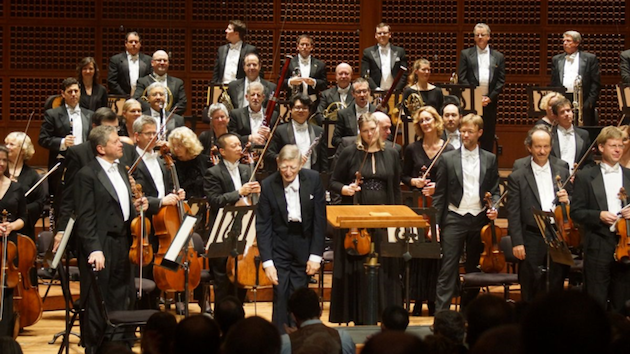
Herbert Blomstedt has been away from the San Francisco Symphony longer than the 10 years he was in charge at Davies Symphony Hall, but with time, the audience's love and admiration for the now 90-year-old conductor laureate has only grown stronger and stronger.
Witness the loud cheers as soon as the eminent Maestro walked on stage last Saturday evening, including a no doubt loving (but slightly annoying) patron who shouted the otherwise accurate sentiment “We love you,” on behalf of the rest of the audience.
Blomstedt dutifully ignored the over-enthusiastic adulation and replied in the best way possible: with Mozart's Symphony No. 40 in G Minor, K.550, and Beethoven's Symphony No. 3 in E-flat Major, Opus 55, “Eroica” — repertoire that he is noted for.
Blomstedt has been conducting for the better part of seven decades (he won the Koussevitzky Prize as a student conductor in 1953, when he was at Tanglewood with Leonard Bernstein) and over the years, his conducting style has become more condensed. He was never an exuberant orchestra leader, but he takes up even less air space than he used to. His gestures have become more and more refined and concentrated, brought down to the bare minimum.
Sans baton, the score closed before him, he gently guides the orchestra along, indicates where things are supposed to head, the pulse of the music subtly hidden in his pose and gestures. He controls the orchestra’s dynamic changes by simply leaning forward or backward an inch, or two.

And he really doesn't have to be more elaborate than that. The musicians know exactly what he wants, and they oblige wholeheartedly. Arranged in Blomstedt’s preferred seating, with first and second violins opposite each other, separated by cellos and violas, the musicians of the San Francisco Symphony found themselves on very familiar ground.
Mozart’s 40th symphony, therefore, was a wonderful journey, with the opening movement’s underlying urgency perfectly articulated in the strings; the elegant simplicity of the following andante, and the spirited austerity of the minuet all tied together in the fiery modulations of the finale.
Equally brilliant in its execution, but of an entirely different scale and ambition, was Blomstedt’s impressive view of Beethoven’s Eroica. Powerful in its contrasts, at times dark and brooding, but also optimistic and joyful, Blomstedt brought out the best in his musicians, with especially the wind section exceeding their usual top form.




